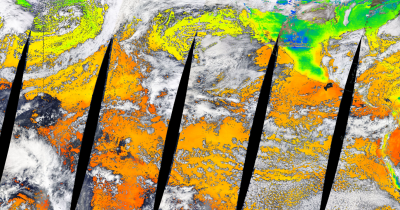How Model Simplifications Affect the Simulated Water Cycle
To represent the complex processes that make up the Earth system, models include numerous simplifying assumptions. A common simplifying assumption, that water carries heat proportional to its mass produces errors in regional energy conservation. Researchers examined how these errors affected a climate model. They discovered that relaxing this simplifying assumption can have a large effect on simulations of the tropical water cycle.
Assessing the sensitivity of models to simplifying assumptions can help guide future development efforts, pointing at areas that could have the greatest impacts. The simulated regional water cycle could be improved by relaxing the simplifications made in the model’s energy formulation, specifically in how moist enthalpy is defined. This could result in more accurate projections of rainfall, which is important for infrastructure planning.
Earth system models often assume that the heat carried by water as it moves between the atmosphere and other components of the Earth system is proportional to the mass of the water. This assumption breaks local energy conservation, making it difficult to interpret results from regional energy budget analyses and limiting our ability to understand future water cycle responses to warming. This study outlines these challenges, their physical basis, and a series of potential pathways forward to better model regional water cycles. Researchers used one of the simpler pathways forward, adding back the enthalpy of water to the atmosphere to force local energy conservation, as an example to assess its potential influence on understanding the water cycle. The Community Atmosphere Model version 6 has substantial water cycle sensitivity to reconciling the heat budget of water for the atmosphere. These findings suggest that future work dedicated to a harder, more physically rigorous treatment of water for use in the Community Atmosphere Model and other similar models is worthwhile.

